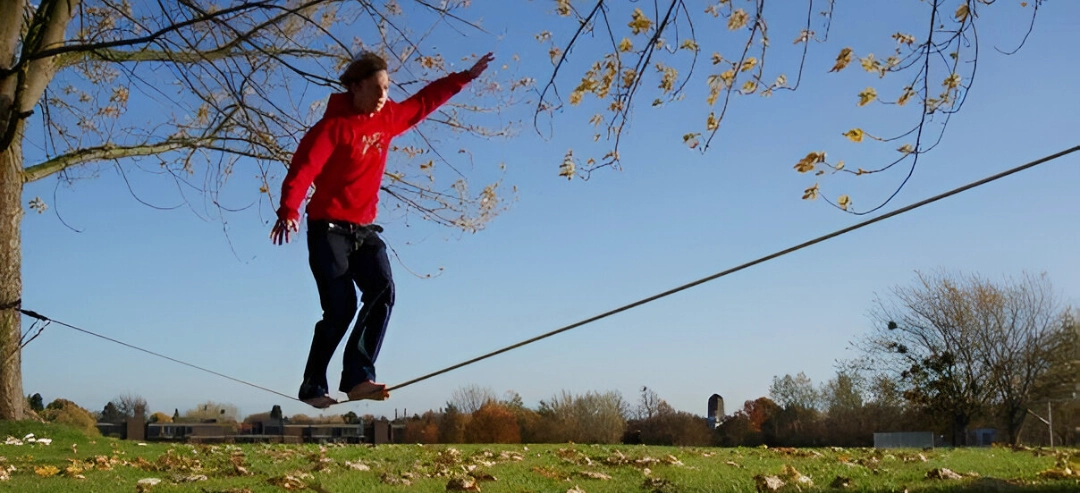by Jarod Roy, Registered Physiotherapist
Whether recovering from an injury, working on fall prevention, or looking to improve athletic performance, balance plays a vital role in daily life. Good balance reduces the risk of falls, improves coordination, and enhances your ability to move confidently through life. But balance isn’t just about “not falling over”—it’s a complex system built on three key components: visual input, sensory (proprioceptive) feedback, and vestibular function.
Let’s break down what each pillar does and how to strengthen it with simple, practical exercises.
What is Balance?
Balance refers to your body’s ability to maintain its center of gravity over your base of support. It’s a dynamic process, constantly adjusting as you move, shift weight, or respond to your surroundings. This coordination relies on input from three interconnected systems, which rely on the strength of your legs for quick responses in real time:
- Visual system – Helps you orient yourself in space by processing what you see.
- Sensory system (proprioception) – Provides feedback from muscles, joints, and skin about body position.
- Vestibular system – Located in the inner ear, this system detects head movements and helps regulate equilibrium.
Common Signs of Balance Deficits
- Feeling unsteady when walking, especially on uneven surfaces
- Dizziness or lightheadedness with head movement
- Difficulty standing on one leg
- Increased fear of falling or actual recent falls
- Trouble navigating in the dark or in busy environments
If you’ve noticed any of these symptoms, working on your balance could make a meaningful difference in your mobility and confidence.
Exercises to Train the Pillars of Balance
Below are targeted exercises to help strengthen each of the three systems. As always, perform exercises safely, using a stable surface or support (such as a wall or chair) as needed.

1. Single-Leg Stance with Eyes Closed
This exercise helps train your reliance on proprioceptive and vestibular cues by removing visual input.
How to Perform:
- Starting Position: Stand near a sturdy surface or in a corner for safety.
- Movement:
- Stand on one leg and close your eyes.
- Try to hold this position for 15 seconds.
- Keep your knee slightly bent and your core engaged.
- Switch sides and repeat.
Repetitions: 2–3 repetitions of 15 seconds per leg.
Tip: If this is too difficult, try it first with your eyes open and progress to eyes closed over time.
2. Head Turns While Walking
This drill provides confusing feedback to the vestibular system, which trains the proprioceptive and visual system, which have to make sense of the environment while the head is moving.
How to Perform:
- Starting Position: Walk slowly along a hallway or open space.
- Movement:
- As you walk, gently turn your head side to side (as if saying “no”) or up and down (as if saying “yes”).
- Maintain a steady walking pace and upright posture.
- Try not to stop or lose rhythm as your head moves.
Repetitions: Walk for 15 seconds while turning your head, rest, and repeat 2–3 times.
Tip: Start with slow, controlled head turns. As you improve, increase the speed of movement or try it in more complex environments (like outdoors).
Summary
Balance is a trainable skill, and like any area of performance, it improves with consistent practice and tends to get worse when we aren’t challenging it. Start simple, progress gradually, and be patient with your body as it adapts. Whether you’re walking on uneven ground, stepping off a curb, or chasing after your kids/grandkids, better balance can help you move through life with greater ease and confidence.
If you struggle with balance, want to reduce your risk of injury, and feel more confident doing the things you love, click HERE to book an appointment with our Registered Physiotherapist, Jarod Roy, at Synergy Sports Medicine East on the Danforth! Select the Steady Step assessment and receive a custom management plan to help you achieve your goals.
 Jarod Roy
Jarod Roy
Registered PT, MScPT, BScKin
Jarod Roy is a physiotherapist practicing at Synergy Sports Medicine,
jarod@synergysportsmedicine.com
T: (416) 551 8715 | F: (647) 349 4866
2155 Danforth Ave, East York | Toronto, ON | M4C 1J7
BOOK JAROD NOW


 Jarod Roy
Jarod Roy